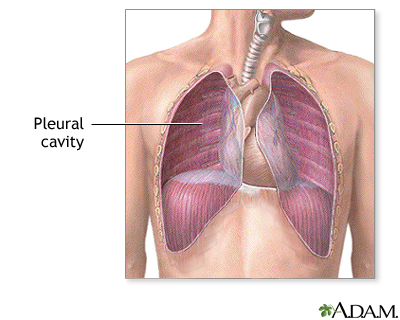Pleural effusions are a common pulmonary disease affecting millions of Americans
It is often caused by a weak or compromised immune system and by a poor diet, smoking, or alcohol intake. As the condition advances, the fluid secreted into the pleura can be thick and bloody. This article will examine the typical symptoms of this disease, the causes and treatment options for this illness.
Pleural effusion: The buildup of fluid inside the pleural cavities. Pleural tumor: A malignant tumor growing on the lining of the lungs (pleura)
Pulmonary embolism: An abnormal clot forms in an artery to the heart, or in a vein from the heart to the lungs. As soon as the clot attaches to the lung wall, it begins to thicken. If a clot forms in an artery, plaque builds up in that arterial wall slowly, eventually blocking blood flow from the lungs to the heart. Pulmonary embolism is often accompanied by severe headache, flu, shortness of breath, chest pain, coughing, and wheezing.
In the case of pleural effusion, fluid from the affected area usually begins to solidify into crystals or clots, which can obstruct passage or reduce the amount of air passing through the affected airway. When this happens, the person suffering from this type of condition has difficulty breathing. The person may have difficulty swallowing and coughing up mucus.
When treating pleural effusion, doctors usually use a variety of medications and surgical procedures to treat the condition. The most popular drugs are cyclophosphamide, doxycycline, vincristine, granisetron, azithromycin, and terbinafine. Some of these medications are known to be very effective, while others may only offer temporary relief and may have other side effects.
Surgery is usually considered a last resort. If the condition does not respond to conventional treatment, an operation called pleurodesis is performed. This procedure is performed when the pleura is torn, damaged or infected, or if a tumor has formed in the lung wall. During this procedure, a new, surgically repaired lung lining is created and the affected area changes shape.

However, surgery has its own set of risks and complications, including the growth of cancer cells in the lungs, scarring of the lungs, and scarring of surrounding tissue. Sometimes the procedure results in additional damage to the lungs. If left unchecked, the growth of cancer cells in the lungs can lead to a life-threatening condition called pulmonary fibrosis.
Many patients experience mild discomfort and cough, difficulty in breathing, chest pain and coughing. Patients who experience these symptoms should contact a physician immediately to determine the cause and seek treatment. Patients should never return to work if they are feeling any symptoms because it can be dangerous to them. A doctor can then prescribe anti-inflammatory medication and advise you to avoid strenuous activities or physical activities that might cause further damage to the lungs and cause more damage to the lungs.
Patients also can experience difficulty breathing, especially during exercise or when they move their air passage forward and back from the chest. This condition can cause chest pains and feel like a full-body weight. Symptoms include shortness of breath and coughing.
If the air passage is narrowed, patients may also experience difficulties in swallowing. They may feel pain in their face, mouth or jaw. The pain may feel like pins and needles or like sharp pins and needles.
Pain or swelling in the throat can cause pain and choking sensations. This can be extremely painful. Patients may find it difficult to swallow, breathe through their mouths and have difficulty in talking.
Surgery for a pleural cavity is sometimes required for a patient who continues to have these symptoms for an extended period of time. If a patient has a malignant or cancerous tumor, they should avoid exposure to radiation. Treatment for a pleural cavity can be complicated if it is not treated early enough.